He’s hot, hot, HOT!!!
How hot? And who is HE?
Let’s put it this way: Philadelphia-born ceramicist Roberto “Robske” Lugo, 34, was invited a year ago to deliver an emerging artist lecture at the prestigious National Council on Education for the Ceramic Arts. His talk about how pottery saved his life was so moving and emotional that he received a rare standing ovation.
The lecture was barely over before curators and collectors were phoning Lewis Wexler, owner of Wexler Gallery at 3rd and Race streets, urging him to represent Lugo, a fellow Philadelphian. Wexler and Lugo met and hit it off, but the gallery owner added: “In all honesty, when I saw his work, it was the most exciting I’ve seen in a long time. I knew I had to show it.”
Irresistible to critics and collectors alike
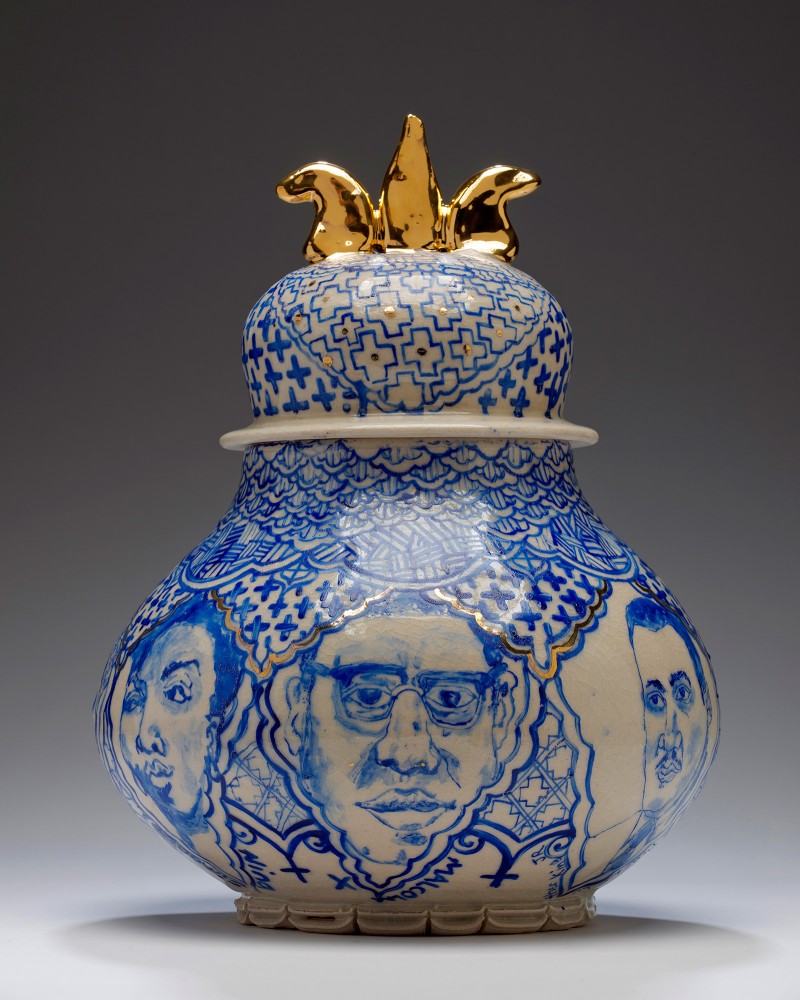
Lugo survived a rough childhood in a tough Kensington Puerto Rican neighborhood near Lehigh and Kensington avenues, riddled with crime, drugs, and poverty, before he discovered his artistic side in a community college art class. “Roberto is the voice of his generation and a little bit of Horatio Alger,” said Wexler.
Featured now in two national art publications—American Craft and Modern magazines—Lugo is celebrating his first solo exhibit with the Wexler Gallery, titled Defacing Adversity: The Life and Times of Roberto Lugo, which runs through June 11.
Even longtime collectors who vow not to buy another thing can’t help themselves when they see Lugo’s unusual ceramics. A British collector at Wexler took one look at a Lugo piece and bought it on the spot, shocking her husband.
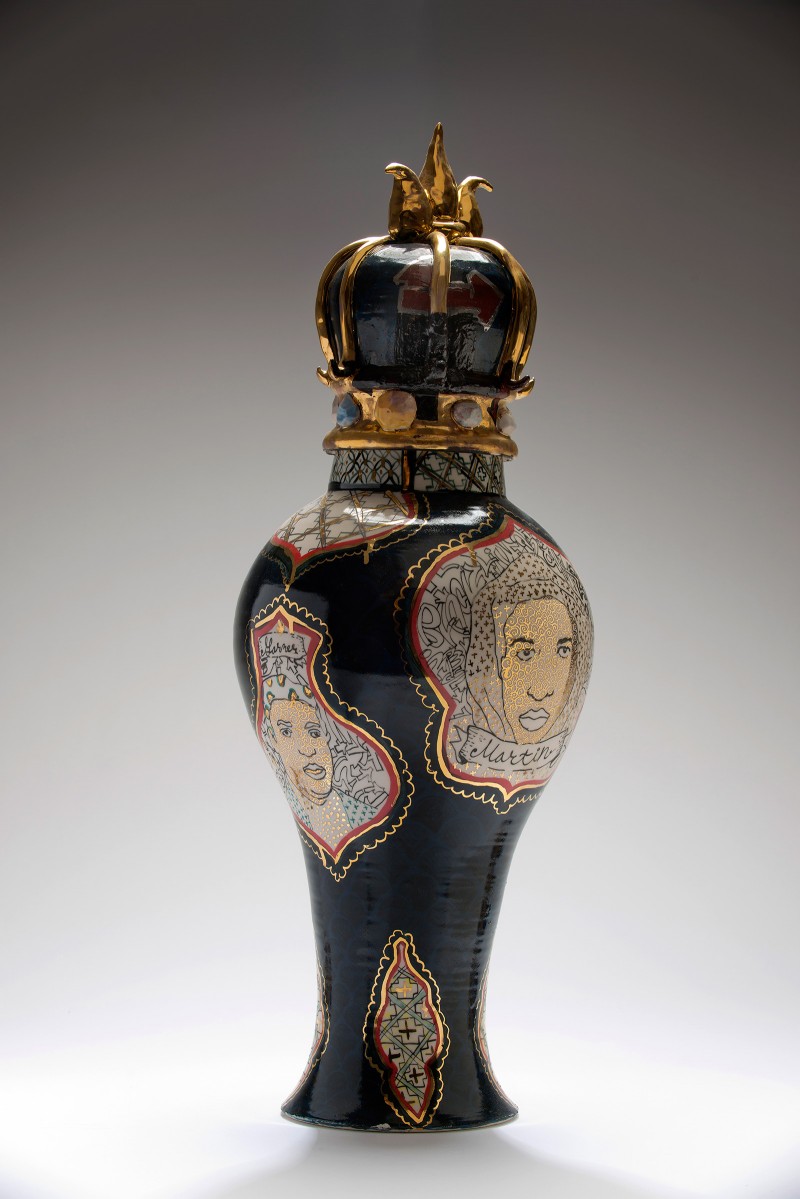
The show features 24 porcelain ceramics, large and small, which sell for $700 to $8,700, and a $200 drawing, now sold. Of nine graffiti paintings, which cost up to $5,200, Lugo painted six, plus one with graffiti artist Mat Tomezsko, while Tomezsko is showing two of his own.
Elevating the issues
The exhibit is the culmination of Wexler testing the market nationally. The gallery owner
headed to major design shows, art fairs, and high-end invitation-only galleries in New York, San Francisco and beyond, showing Lugo’s classically-shaped porcelain tea pots, ginger jars, vases, and plates, emblazoned with graffiti, hip-hop artists, civil rights icons, and recent victims of police brutality. This juxtaposition of ancient pottery shapes with contemporary issues emphasizes the dichotomy, which is Lugo’s way of elevating the issues which shaped him.
Lugo’s work was such a rage on the national tour that Wexler sold out at one venue and called the potter to send more overnight.
“I was selling pieces right out of the FedEx box,” said a smiling Wexler.
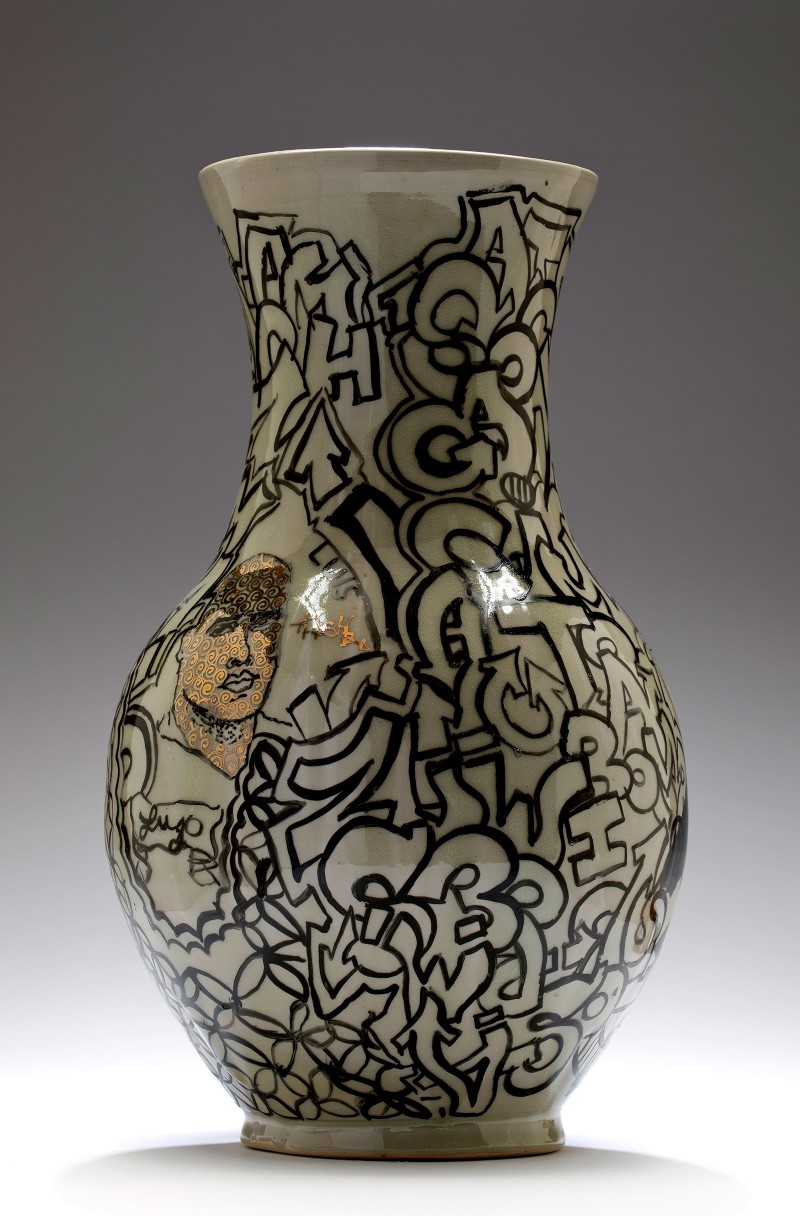
The cover of American Craft magazine’s April-May issue features a porcelain teapot, bearing Lugo’s likeness with a scruffy beard, mustache, and red bandana. An eight-page spread, showing 17 pots, describes him as “An Agent of Change” who is “rooted in a sense of place” and “found his voice as an activist, culture-maker and educator” illuminating hot-button issues of today.
Modern magazine’s Spring issue features Lugo with the headline: “Roberto Lugo is Changing the World, One Teapot at a Time.”
Yet, Lugo’s four-mile, 14-minute jaunt from his onetime home on East Orleans and Jasper Streets in Kensington, to national magazine coverage and Wexler’s gallery in Old City, took 16 years.
I met Roberto Lugo at Wexler Gallery recently and talked with the artist about his journey. “I didn’t see my life going anywhere,” said Lugo, who grew up in a series of burned out and damaged homes that Gilberto Lugo, his father—a Pentecostal preacher, factory worker, and occasional vendor—was repairing. And school was no different. His guidance counselor torpedoed his applications for his choice of high school until his mother, Maribel Lugo, vowed to sue the school district. And yet, as a devout religious teen, Lugo rejected the eternal question that arises for some inner-city teens: “Should I rob people to get a nice car or stereo?”
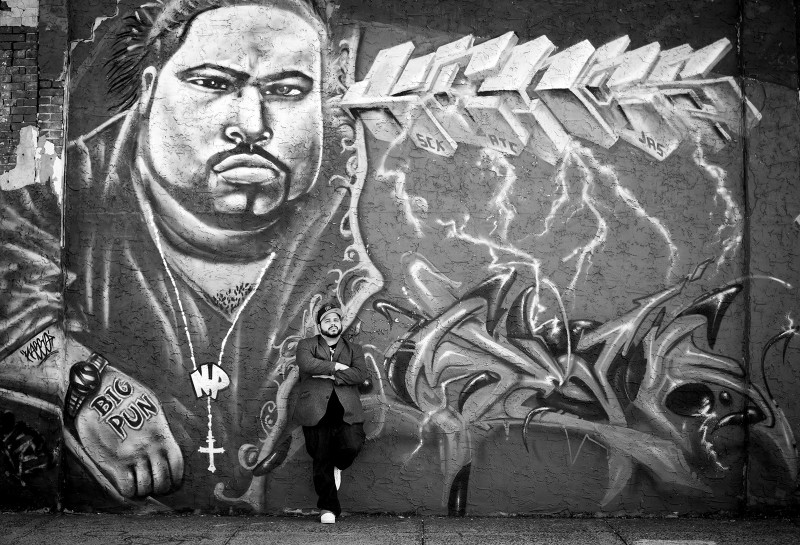
After a few years knocking around in dead-end jobs and learning graffiti in Philadelphia, at 22, he moved to South Florida to live with a cousin and figure out what he wanted to do with his life. Unlike graffiti of the 1960s, when Philadelphia street gangs marked their turf by spray-painting neighborhood walls with their gang affiliation and personal nicknames, today graffiti is a revived art form, with dripping paint, slashes and scribbles, usually done illegally on walls, but also painted on canvases—and sold.
Lugo wanted to earn a decent living, and saw college as a way to go. So, he paged through a course catalogue and decided to take design fundamentals, enhancing his interest in art. His instructor also taught pottery and suggested that he might like it. The rest is history. Soon, he was working 15 hours a day making ceramic pots, and for the first time in his life, he was getting kudos for his work, and it felt good.
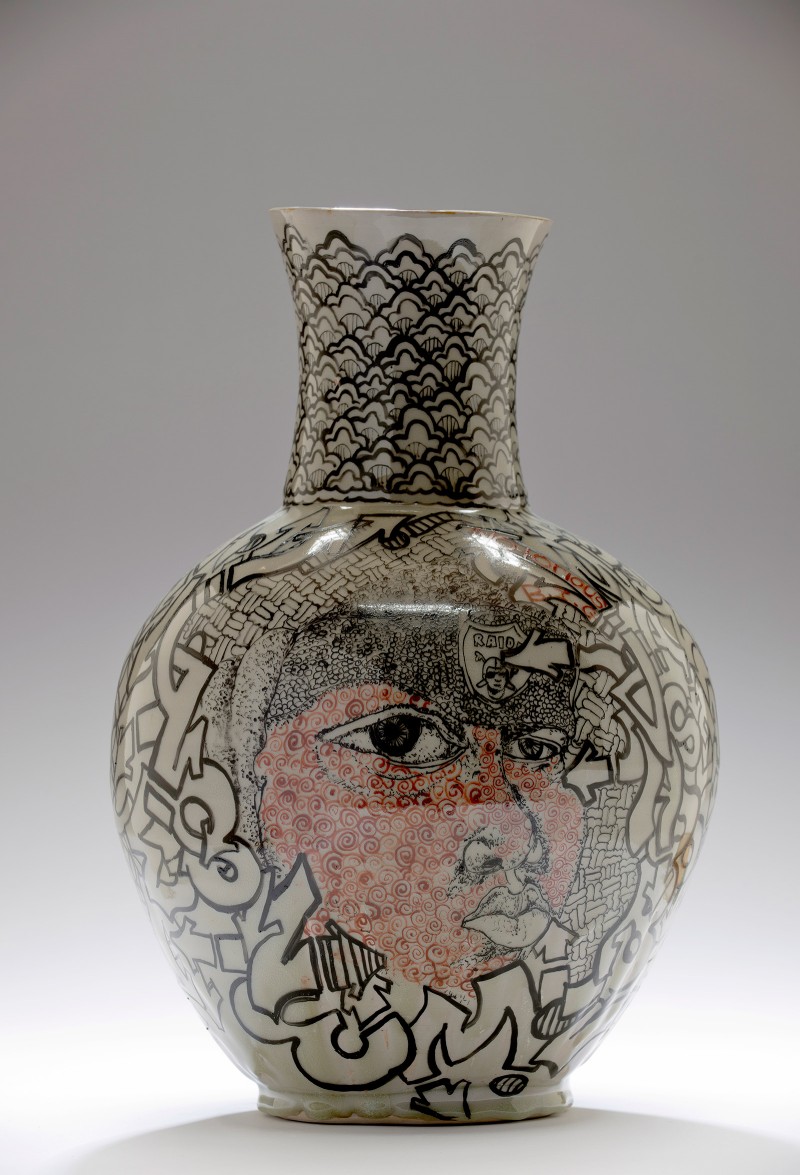
“I love the physicality of doing it. The visceral tactility, having that connection,” Lugo said. “Pottery made me envision making something that I never thought I could. Now, I participate in the culture I live in. I tapped into my inner light. It’s what I was supposed to do.”
By 2009, he was accepted into the distinguished ceramic arts program at the Kansas City Art Institute. He graduated in 2012. And with an MFA under his belt from Penn State’s School of Visual Arts in 2014, he’s been teaching since last year—and loves it—at Marlboro College in Southern Vermont. Not bad for someone who couldn’t read very well as a kid.
Serious craft with a sense of humor
Robske, the graffiti tag with which Lugo signs his work, is not one to forget where he came from, nor where he found inspiration. On a 12-inch-by-12-inch-by-15-inch pot, titled “Civil Abolition: Seven Knights of My Soul,” he’s drawn iconic portraits of those who influenced him: Malcolm X, Dr. Martin Luther King, Jr., Sojourner Truth, Nina Simone, Harriet Tubman, W.E.B. Dubois, and Frederick Douglass. But his own image on a pot is also quite compelling.
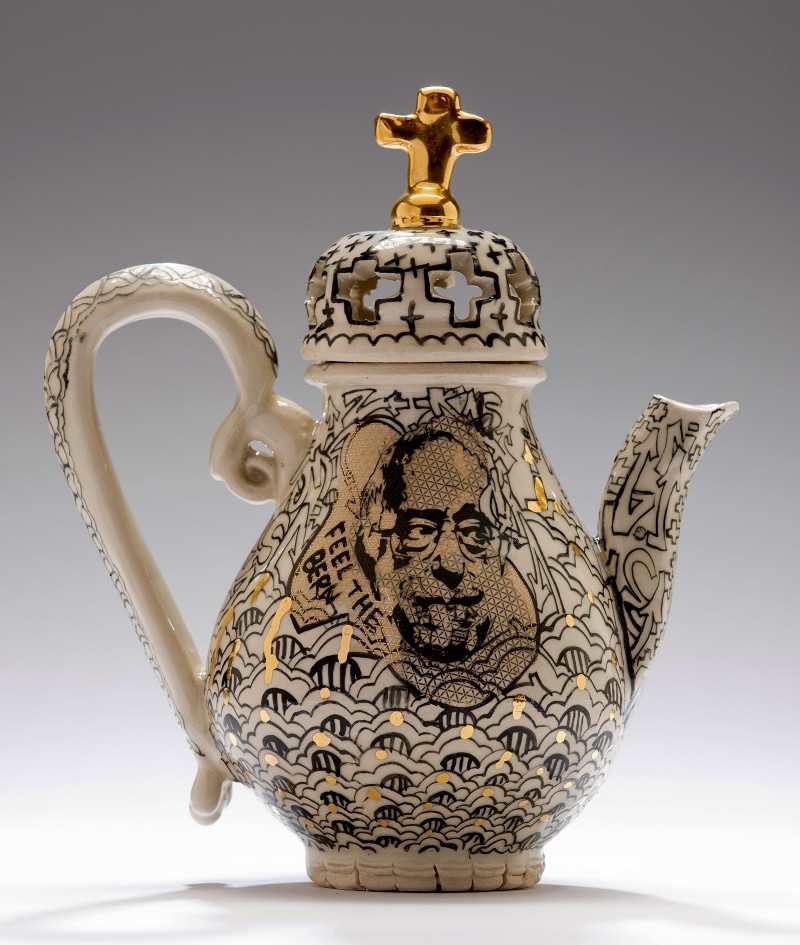
He’s also done a pot featuring his brother, Luis Lugo, as well as notable figures of Philadelphia: poet Edgar Allen Poe as well as Betsy Ross, who is opposite Joe Frazier on a teapot. Lest anyone forget this year is a presidential election, “Feel the Bern” features Democratic presidential candidate Bernie Sanders, while on another side of the teapot is Whoopi Goldberg. Among others featured are Wu-Tang Clan’s Dirty Ol’ Bastard, Dr. Cornel West, Maya Angelou, Jean-Michel Basquiat, Frida Kahlo, and Michael Jackson. An eclectic mix.
Just to let you know where he stands on crime, his philosophy—and humor—are inscribed on pots: “Ain’t no such thing as a Halfway Crook,” and “All about the Benjamins…”
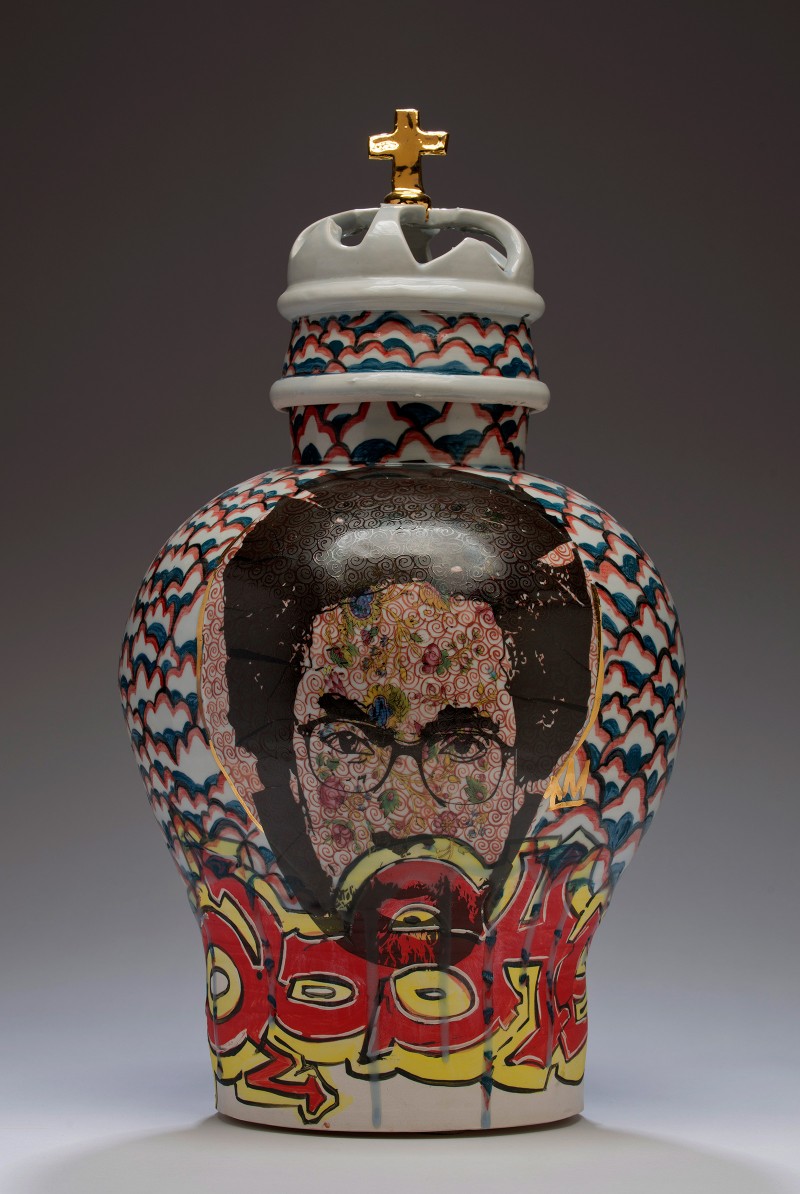
At his March 24 opening at Wexler, Lugo’s mother, who flew in from Florida, looked around the gallery and said, “We’re just shocked and amazed at the stuff that comes out of his mouth and brain. It doesn’t matter where you come from, look at what he’s accomplished.”
Lugo’s wife, Ashley, meantime, was chasing the couple’s toddler, Theo, who may soon be doing his own brand of graffiti, and hopefully, Theo’s dad will maintain his sense of humor.
This summer, the Clay Studio in Old City has offered Lugo a residency to create more ceramics. But he’ll also have a chance to give back to Philadelphia. He’ll be teaching inner city students the art of mural-making through the Mural Arts Program.
And Lugo now has a rejoinder to a wise-guy’s one-time put-down of him: “To that one guy who told me that I suck…you lose,” reads a Lugo graffiti painting.
The canvas sells for $900.
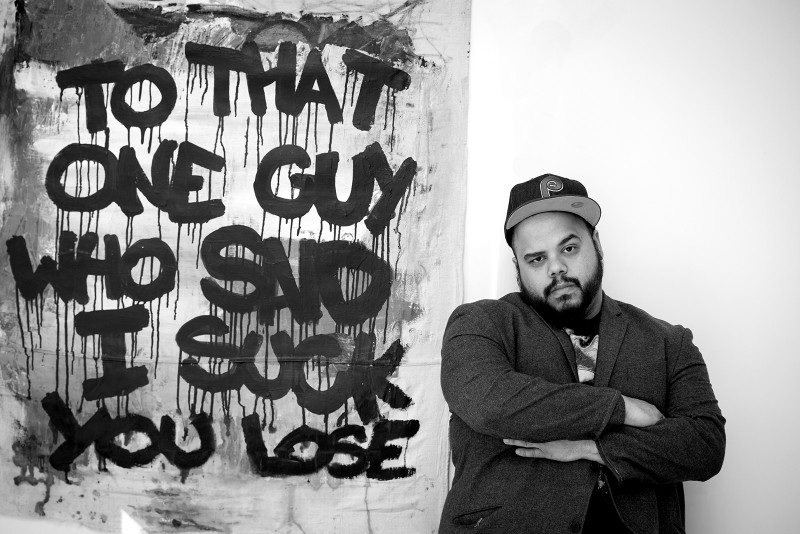
Defacing Adversity: The Life and Times of Roberto Lugo is on view at Wexler Gallery from March 24, 2016 through June 11, 2016.









